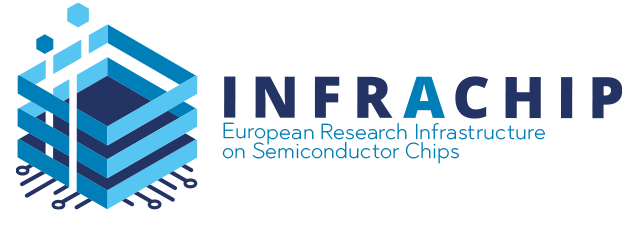Asylum Research PFM/MFM
About
Asylum Research MPD-3D Atomic Force Microscope (AFM) (https://afm.oxinst.com/ ) for characterisation of nano-ferroics. During atomic force microscopy, a cantilever with a sharp tip is scanned across a sample surface where cumulative forces between atoms in the tip and surface are probed to yield a nanometer-resolution topography map. Using conductive probes, nano-scale electric properties can be measured and using probes coated with thin layers of magnetic material, magnetic properties can be detected. Our MFP-3D AFM is enabled with the capability of performing measurements in the presence of a variable magnetic field (±2500 G).
Description
Nano-scale characterisation of piezoelectric, ferroelectric, ferromagnetic and magnetoelectric multiferroic materials is performed with our state-of-the-art Asylum Research MFP-3D Atomic Force Microscope with high voltage piezoresponse force microscopy (PFM), variable magnetic field (VFM) and high voltage PFM imaging under variable magnetic fields (VFM2-HV) capabilities.
The MFP-3D Asylum Research AFM is equipped with a high voltage amplifier (up to ±220V) and a DART (Dual AC Resonance Tracking) PFM mode designed to boost the piezo signal and minimise topographical ‘cross-talk’, enabling measurements of even the weakest piezoelectric materials. The ability of the PFM lithography mode to ‘write’ and pattern ferroelectric domain structures allows demonstration that polarisation information can be stored in films and recovered for potential memory/data storage applications (see case study 1 below).
The VFM2-HV Variable Field Module works in conjunction with the MFP-3D Asylum Research AFM addressing technical needs of 1) Magnetic force microscopy (MFM) imaging under a high, variable magnetic field and 2) simultaneous MFM and PFM under high tip-sample voltage bias and high, variable magnetic field. During MFM imaging, long-range, out-of-plane magnetic forces between ferromagnetic samples and an AFM coated with a ferromagnetic material are detected. The VFM2-HV can apply static magnetic fields up to ±2500 G, parallel to the sample plane, therefore is an ideal option for researchers who want to investigate nano-scale magnetic effects on application of high magnetic fields while performing spatially resolved atomic force microscopy experiments. It uses a unique design incorporating rare earth magnet rotation to produce the magnetic field so there is no heating or drift as the field changes. This is a clear advantage over conventional high magnetic field measurements using electromagnets, which require complicated superconducting or water-cooled magnets. Neither of these is suitable for low-noise, high precision scanning probe measurements. The VFM2-HV therefore allows for precise control of magnetic fields, magnetic domain switching behaviour at the nano-scale and the assessment of new magnetic structures, nanocomposite magnets for devices such as magnetics on silicon, spintronic materials, nanoparticles and patterned magnetic media for potential high density magnetic memory applications.
The distinct advantage of the VFM2-HV kit is that it can provide direct evidence of magnetoelectric coupling at the nanoscale by allowing simultaneous PFM and MFM under high tip-sample voltage bias (up to ±220 V) in the presence of a high, variable magnetic field (up to ±2500 G) (see case study 2). The VFM2-HV kit enables assessment of high-quality films for device level performance. Furthermore, using the ability of the PFM lithography mode to ‘write’ and pattern ferroelectric domain structures offers additional control over the electrical switching of magnetic domains in patterned arrays.
Keywords: atomic force microscopy, piezoresponse force microscopy, magnetic force microscopy, variable magnetic field
Technical specifications:
Sample requirements vary depending on imaging mode requested, please discuss with equipment responsible (lynette.keeney@tyndall.ie).
Case study:
Describe the experience of an InfraChip user (real or fictional) using this offering. What they are trying to do, why they need the offering and how the InfraChip access helps them progress with their research.

Case Study 1: a) Topography, b) PFM amplitude and c) PFM phase images illustrating the capacity of PFM lithography to “write” and “read” information based on opposite ferroelectric polarisation states. Reference = L. Keeney et al., JAP, 112[2], 024101 (2012).

Case Study 2: Reversible (encircled in yellow) and irreversible (encircled in green) magnetoelectric switching of ferroelectric domains in a multiferroic material under the influence of a variable magnetic field. Reference = A. Faraz et al., J. Am. Ceram. Soc., 100, 3, 975-987 (2017).
Optional:
Paper(s)/presentation(s) describing equipment/offering usage :
https://doi.org/10.1111/jace.12467
https://doi.org/10.1002/aelm.201901264
https://doi.org/10.1016/j.actamat.2023.119594
https://doi.org/10.1017/S1431927621013726
https://doi.org/10.1021/acs.chemmater.0c03454
http://dx.doi.org/10.20517/microstructures.2023.41
https://doi.org/10.1111/jace.14597
Typical Application/Project:
Nano-scale characterisation of piezoelectric, ferroelectric, ferromagnetic and magnetoelectric multiferroic materials
Access Provider / Facilities




